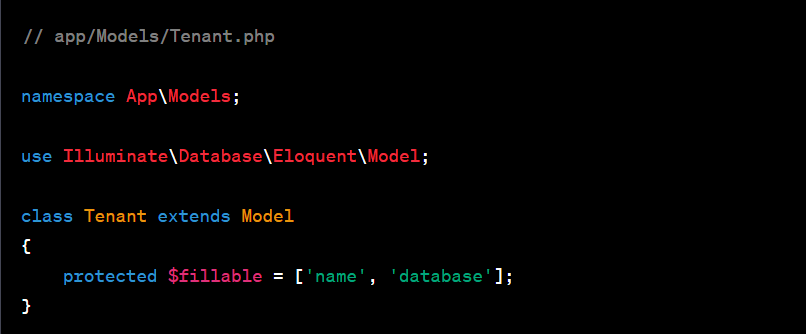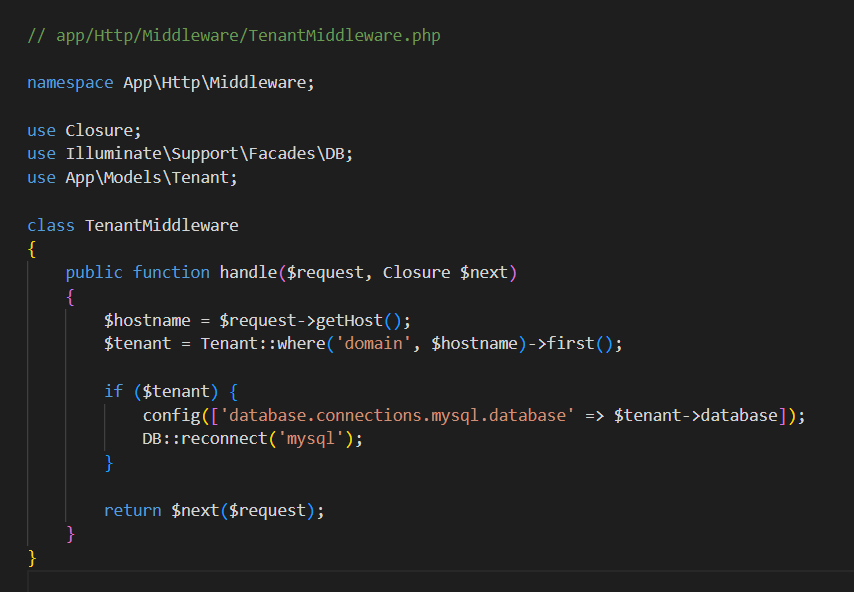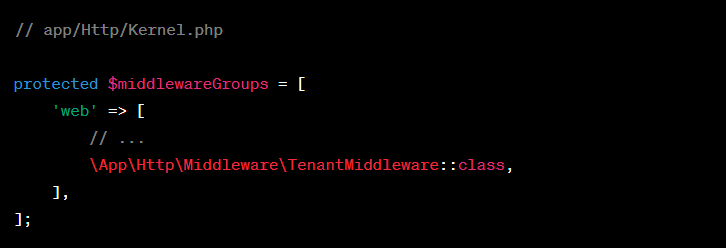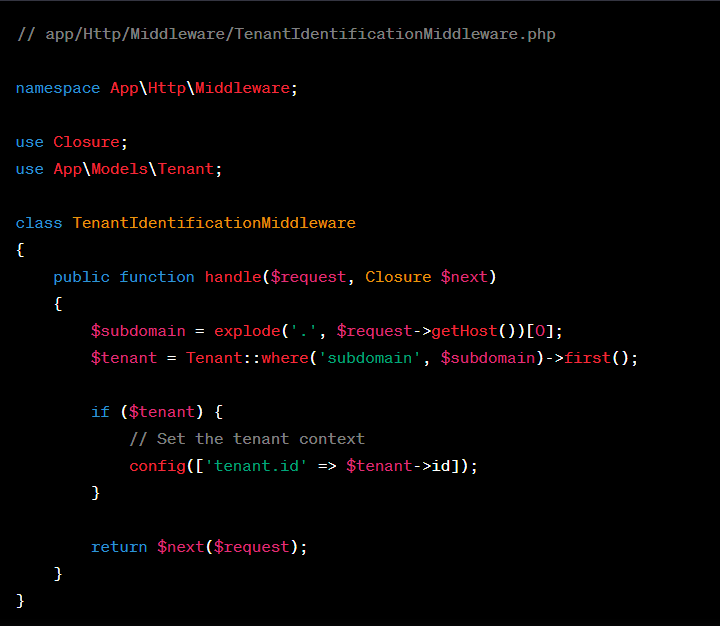Implementing Multi-Tenancy in Laravel: A Comprehensive Guide
Multi-tenancy is an architectural approach that allows a single application to serve multiple clients or tenants while maintaining their data isolation and customization. In the context of a Laravel application, implementing multi-tenancy requires thoughtful design and integration. There are different strategies to achieve multi-tenancy in Laravel, each catering to different scenarios and requirements.
Approach 1: Separate Database per Tenant
This approach involves creating a separate database for each tenant, ensuring complete data segregation. This is particularly useful when tenants require high data isolation and individual scaling options.
Step 1: Setting Up Tenant Information
Create a migration to set up a table to store tenant information:


Step 2: Tenant Model
Create a Tenant model to interact with the "tenants" table:


Step 3: Middleware for Database Switching
Create a middleware to switch the database connection based on the current tenant:


Step 4: Applying Middleware
Apply the TenantMiddleware to the desired routes or controllers:

Approach 2: Shared Database with Tenant Identification
This approach involves using a shared database for all tenants, but differentiating tenant data using a "tenant identifier."
Step 1: Modify Existing Tables
Add a "tenant_id" column to relevant tables to associate each row with a specific tenant:

Step 2: Middleware for Tenant Identification
Create a middleware to identify the current tenant based on the request and set the appropriate context:

Step 3: Applying Middleware
Apply the TenantIdentificationMiddleware to your routes or controllers:

Approach 3: Using the "hyn/multi-tenant" Package
The "hyn/multi-tenant" package provides a comprehensive solution for implementing multi-tenancy in Laravel. It simplifies tenant management, database segregation, and tenant-aware routing.
Conclusion
Implementing multi-tenancy in Laravel opens up new possibilities for serving multiple clients or tenants with a single application. Whether you opt for separate databases per tenant, shared databases with tenant identification, or leverage the "hyn/multi-tenant" package, a thoughtful approach and thorough testing are crucial. By following the steps outlined in this guide, you can successfully implement multi-tenancy in your Laravel application, catering to the needs of various clients while maintaining data isolation and customization.